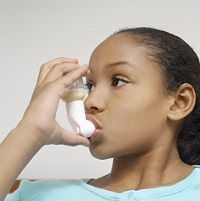Getting Urban Kids with Asthma to Use Primary Care Docs
Getting parents with children who have asthma to use primary care doctors to control the condition can be difficult in urban settings where emergency rooms are commonly used for asthma visits. A team reports on using electronic communications to get these patients to their PCPs instead.

When it comes to urban childhood asthma, primary care physicians—not specialists or emergency room doctors—should be the go-to caregivers, researchers have found.
But these kids' parents or other significant adults in their lives may not be aware that these primary care physicians (PCPs) can and should play the main role in care. Using electronic communications can get that message to parents and improve care, a team found. .
A study designed to heighten awareness and use of PCPs as the principal resource for pediatric asthma care among urban minority youth significantly redirected focus on PCPs.
Conducted by doctors and other health professionals from the Children's National Health System, Washington, DC, and the George Washington University School of Medicine and Health Sciences, Washington, DC, the prospective study addressed the high dependency of disadvantaged, urban minority youth with asthma on emergency departments (EDs) to address their asthma events.
The project sought, instead, to transform the way patient guardians thought about and addressed treatment, with the goal of raising identification of PCPs as the primary care resource.
The study sample group comprised 50 guardians of asthmatic children 2-12 years of age, and surveyed guardians at both 3 and 6 months out. Tools employed to influence guardian behavior centered around integrated electronic health records and care coordination.
The prospective cohort study introduced an electronic communication process linking asthma specialty clinics and PCPs combined with short-term care coordination.
The median age of the children was 5.8 years; the group was 64% male, overwhelmingly African-American (98%) and enrolled in public insurance (94%).
The efforts promoted significant increases in guardians identifying their PCP as the child’s primary asthma care provider at both the 3 month and 6 month marks post-intervention: from 70% at baseline to 85% at 3 months and to 86% at 6 months. Importantly, significant increases were also reported in guardians bringing their children to the PCP in response to asthma problems (16% at baseline, 35 % at 3 months, and 41% at 6 months).
Thus the combination of coordinated communications and care succeeded in moving the needle toward PCP identification and care.